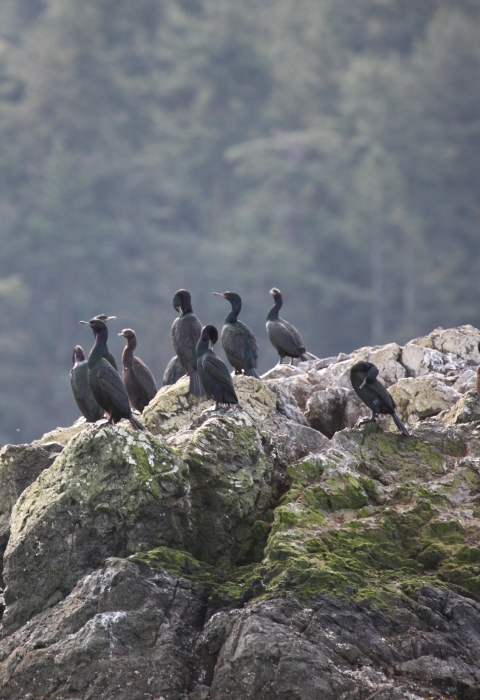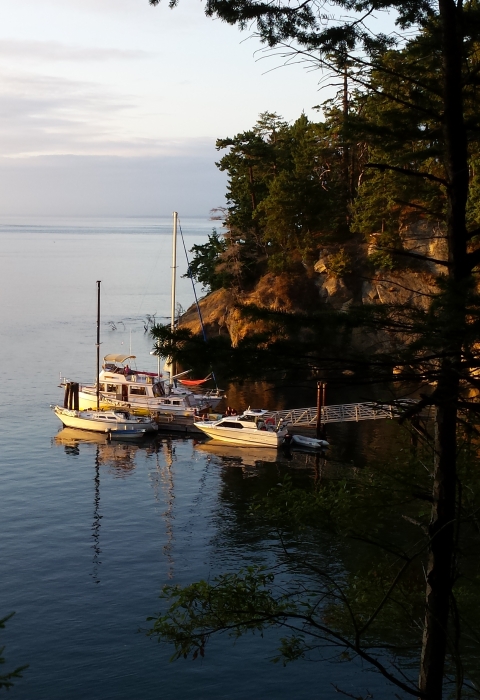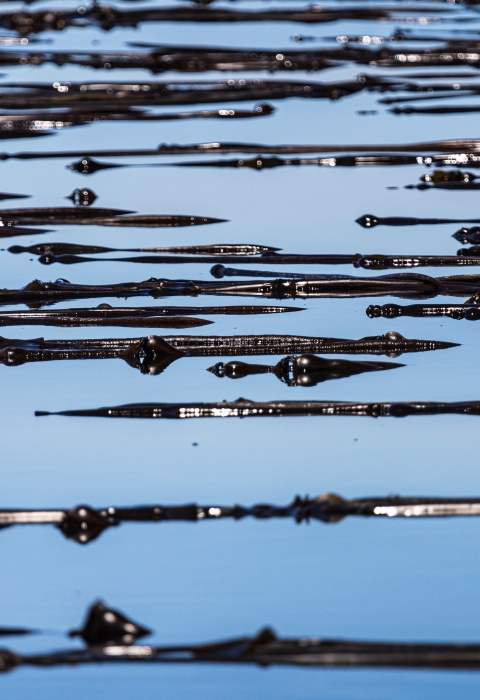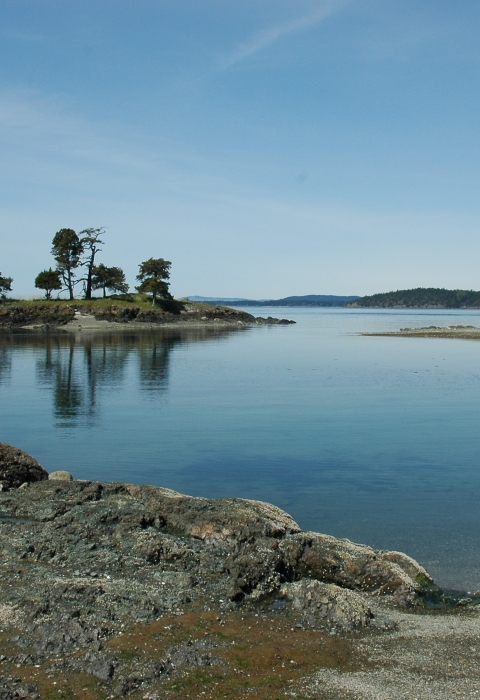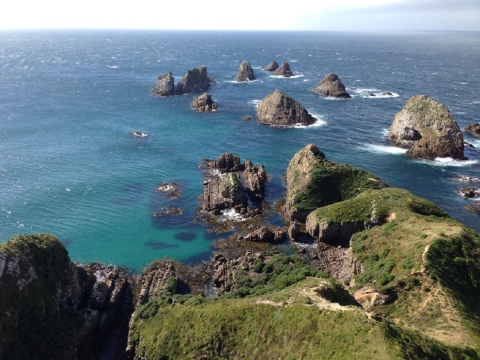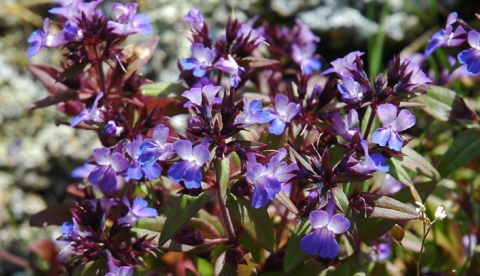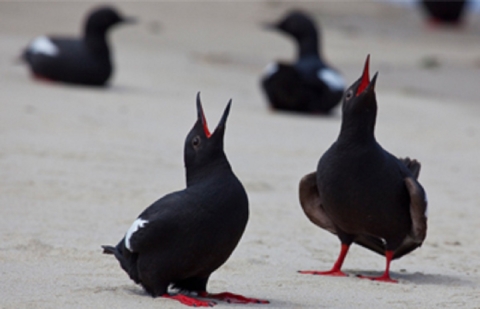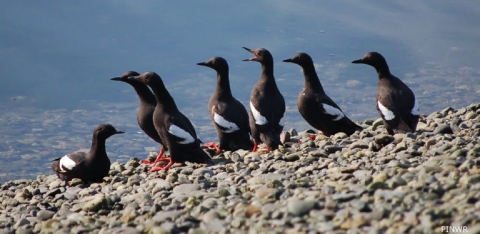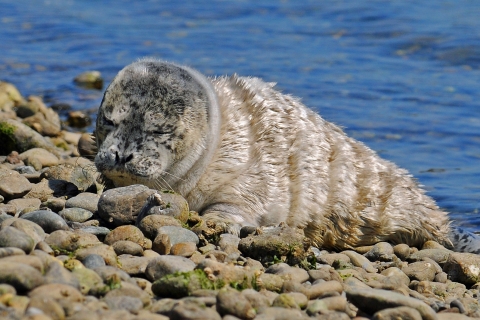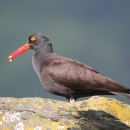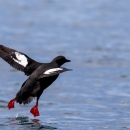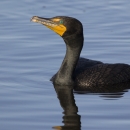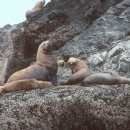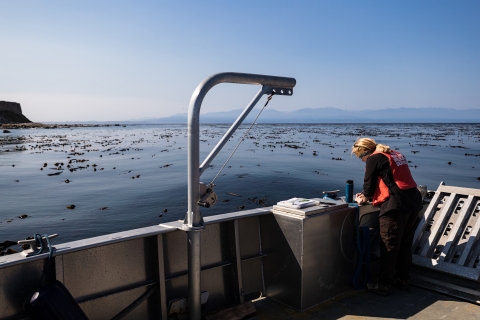To prevent disturbance to sensitive seabirds and marine mammals, all islands within the San Juan Islands National Wildlife Refuge, excluding public use areas on Matia and Turn Islands, are closed to public access, and the surrounding waters within 200 yards are closed to watercraft.
The rocks, reefs and islands of the San Juan Islands National Wildlife Refuge were set aside in 1960 to provide important habitat for migratory birds and other wildlife. Black oystercatchers, Double-crested and Pelagic cormorants, rhinoceros auklets, and pigeon guillemots are among the bird species that nest on Refuge islands. Harbor and elephant seals regularly use the shorelines to rest, molt and give birth to pups. Additionally, the untrammeled islands are home several rare plants including brittle prickly-pear cactus, bear’s foot sanicle, and California buttercup.
Select opportunities to explore the Refuge islands may be found by foot, boat, and car. Most of the Refuge consists of small, wilderness islands whose fragile habitats are closed to human activities, enforced by a 200 yard off-shore buffer zone. Two refuge islands, Turn and Matia, have overnight campgrounds operated by Washington State Parks and short hiking trails for adventurous visitors. The Refuge is within the bounds of the Cascadia Marine Trail, a premiere water trail for non-motorized boaters. For those travelling by car, the Washington State Ferry routes from Anacortes to the San Juan Islands wend past several refuge islands.
With every drop of water you drink, every breath you take, you're connected to the sea. No matter where on Earth you live. - Sylvia Earle
Visit Us
San Juan Islands National Wildlife Refuge provides visitors with a unique opportunity to experience an island environment. Taking the time to learn more about the Refuge before you visit will help you to get the most out of your journey.
Location and Contact Information
About Us
San Juan Islands National Wildlife Refuge was established in 1960. In 1975, it was consolidated with Smith Island NWR (est. 1914), Matia Island NWR (est. 1937) and Jones Island NWR (est. 1937) and additional islands were adopted under the name of San Juan Islands NWR. The purpose of the Refuge is to “. . . facilitate the management of migratory birds for which the United States has a responsibility under international treaties and to further effectuate the purposes of the Migratory Bird Conservation Act.” Smith and Minor Islands also retain their original establishing purpose “. . . as a preserve, breeding ground and winter sanctuary for native birds.”
Note: Bold language is from the original establishing legislation.
What We Do
Resource Management
The islands that make up San Juan Islands National Wildlife Refuge are managed for a variety of purposes, including as a preserve for native birds, as a breeding ground for migratory birds, and to preserve the unique wilderness island character found in the San Juan Islands. Management activities on the Refuge include surveys and monitoring of wildlife, invasive species invasive species
An invasive species is any plant or animal that has spread or been introduced into a new area where they are, or could, cause harm to the environment, economy, or human, animal, or plant health. Their unwelcome presence can destroy ecosystems and cost millions of dollars.
Learn more about invasive species management, and reduction of human-caused wildlife disturbance. In keeping with the primary goals of managing the Refuge for the benefit of wildlife, most of the islands are closed to human use. However, the U.S. Fish and Wildlife Service manages Turn and Matia Island in conjunction with Washington State Parks to provide visitors an opportunity to experience the wild nature of the islands.
Our Organization
Washington Maritime National Wildlife Refuge Complex
San Juan Islands National Wildlife Refuge is managed as one of six refuges in the Washington Maritime National Wildlife Refuge Complex. A Refuge Complex is an administrative grouping of two or more refuges, wildlife management areas or other conservation areas that are primarily managed from a central location. Refuges are grouped into a complex structure structure
Something temporarily or permanently constructed, built, or placed; and constructed of natural or manufactured parts including, but not limited to, a building, shed, cabin, porch, bridge, walkway, stair steps, sign, landing, platform, dock, rack, fence, telecommunication device, antennae, fish cleaning table, satellite dish/mount, or well head.
Learn more about structure because they occur in a similar ecological region, such as a watershed or specific habitat type, and have a related purpose and management needs. Typically, a project leader or complex manager oversees the general management of all refuges within the complex while refuge managers may be responsible for operations at specific refuges. Supporting staff are generally, but not always, centrally located and support all refuges within the complex.
The Washington Maritime Complex is headquartered at the Dungeness NWR near Sequim, WA.
Our Species
The San Juan Islands National Wildlife Refuge provides a serene haven for large numbers of the birds in the Salish Sea. Most of the Refuge consists of rocky islands with an occasional pocket beach, stand of trees, or patch of grass. Despite their barren appearance, many birds flock to these island shelters, preferring the isolation from predators and human activities. A handful of the islands support small communities of rare plants that cannot survive amongst the hubbub of the human population. Marine mammals, such as harbor seals, can frequently be seen bobbing offshore or resting at the water's edge.
Birds
The Refuge islands support boisterous populations of birds. Black oystercatchers scold from the water's edge while bald eagles circle above.
Mammals
The rocks, reefs, and islands of the Refuge provides important habitat for both land and marine mammals. Harbor and elephant seals rest on shorelines and feed in the surrounding waters.
Healthy habitats are critical to supporting wildlife populations. For many animals in the region the refuge islands are the only place where they can find an environment undisturbed by humans.
